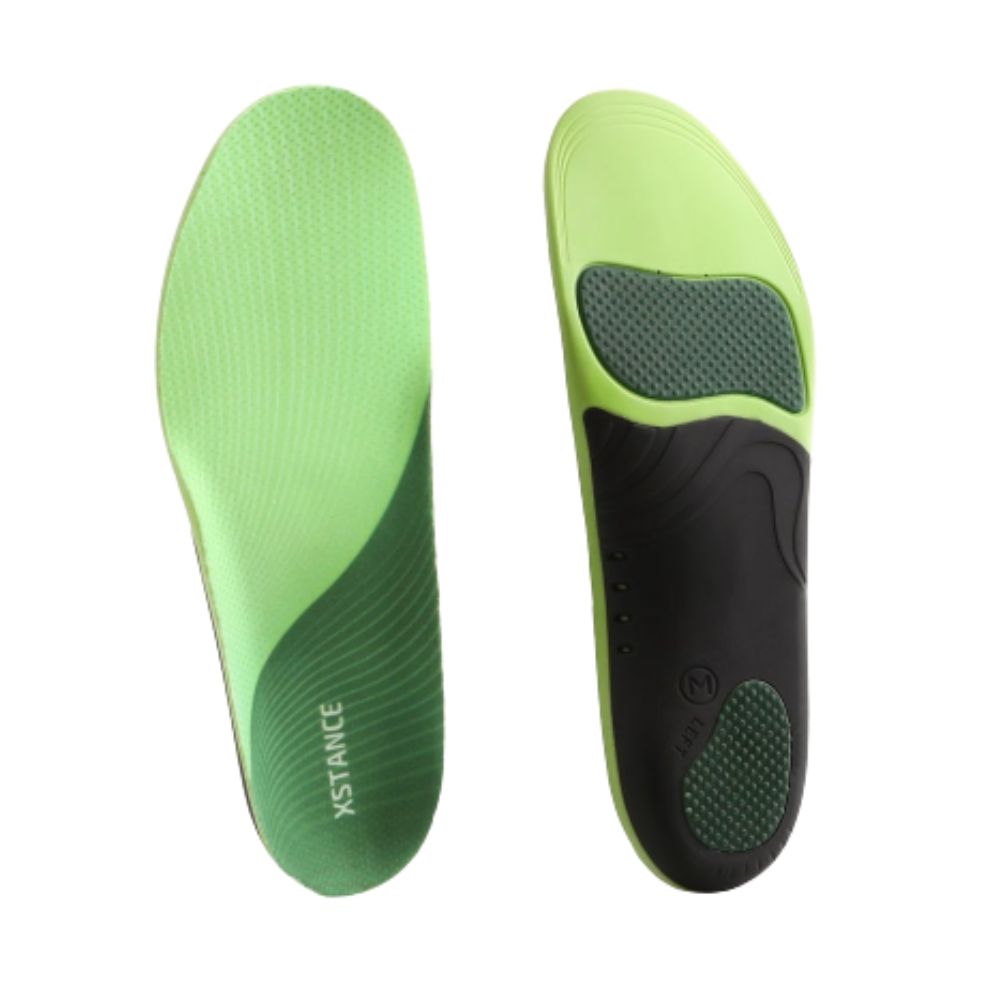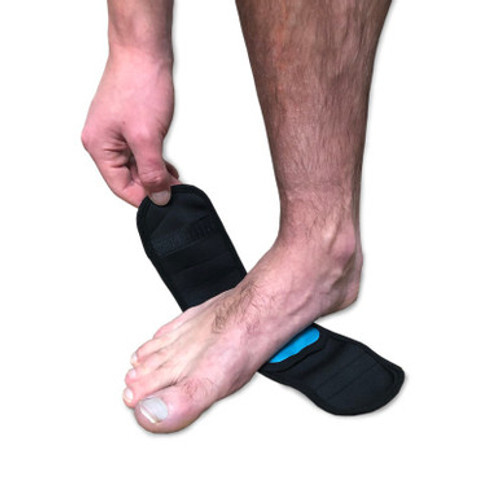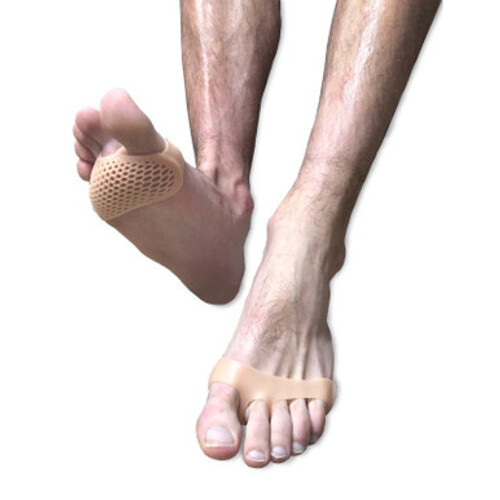Plantar Fasciitis Causes, Symptoms & Simple Solutions
Plantar fasciitis. Dread it, run from it, yet it feels like destiny brings foot pain right to your doorstep.
Soreness, tingling, sharpness, and burning sensations caused by this condition can really impact your lifestyle long term. So what exactly is plantar fasciitis? Why does its name sound like an elusive Amazonian herb, and what can you do to cure it for good?
This article will cover the main causes, symptoms, and solutions for dealing with plantar fasciitis, so you don’t have to be a victim of mobility issues anymore.
What Exactly is Plantar Fasciitis?
Plantar Fasciitis occurs when the plantar fascia ligament (the thick band of tissue on the bottom of your foot) gets inflamed. And because we spend so much time on our feet, it’s extremely common. Particularly for shift workers and those putting in long hours on the job.

Fun fact: Your plantar fascia is actually the largest ligament in your body. So let’s take good care of it.
Common Symptoms of Plantar Fasciitis
Pain and tenderness on the bottom of the foot, usually towards the heel. With that being said, you can experience pain across the entire foot.
If you notice discomfort when walking, standing, or running, this is a telltale sign. Stiffness and sensitivity to the area is also a common symptom of plantar fasciitis, particularly in the mornings.
Other symptoms include: Warmth, swelling, difficulty walking on hard surfaces.
What Causes It?
Flat feet, high or low arches, tight calf muscles, and sedentary lifestyles can all cause Plantar fasciitis. But it’s not exclusive to the slow-moving individual. Dancers and runners are some of the most common sufferers.
Is Plantar Fasciitis Dangerous?
If left untreated, plantar fasciitis can develop into further health conditions that extend beyond the feet.
Heel Spurs
When calcium deposits build up under the heel bone, heel spurs occur. These are actually caused by the repeated strain of the plantar fascia ligament over many months, causing the membrane that protects your heel bone to tear.
Symptoms of heel spurs range from a sharp knife-like pain to a dull aching.
Chronic Joint Conditions
Because plantar fasciitis impacts normal walking patterns, over time this can lead to knee, hip, and back problems. Joints can become misaligned, muscle disorders can follow, and conditions like osteoarthritis and pelvic instability can become a reality.
Loss of Mobility
If left untreated, the tissue in your foot will continually tear, affecting the stability of the ligament and making treatment harder. The biggest impact this will have on your life is the loss of mobility. Simple tasks and hobbies can become painful, and often impossible over time.
Do I need Surgery?
In short, no. Surgery is usually only considered if you’ve undergone 10 months of non-surgical treatments without improvement.
Luckily, 90% of patients find success with non-surgical treatments, most of which can be done from the comfort of your home.
Effective Plantar Fasciitis Home Treatments
Firstly, you can avoid walking barefoot and take shorter steps to reduce strain. We also recommend staying clear of activities that involve foot impacts, such as jogging or jumping.
For heavier individuals, weight loss can also help relieve pain and tension on the foot. Try the treatments below to alleviate pain.
Ice Rolling
A simple exercise that involves rolling your foot a cold water bottle for 20 minutes has been found effective. This is known as cold therapy and is extremely effective for eliminating pain by reducing inflammation and shrinking the size of the blood vessels in the foot.

Feel free to do this multiple times a day as needed. Cold packs or a cloth filled with ice can also be used, though we prefer the rolling motion that a chilled bottle provides.
Stretching
When your calf and feet muscles are tight, this will make your plantar fasciitis worse. Therefore, calf stretches can work wonders for eliminating pain caused by this condition. Try keeping your heel on the ground and your toes on a wall, then slowly lean forward with your leg locked out.
If you really want to give those calves a good Yogi stretch, you can try the downward dog, a fantastic pose for releasing tension.
- Press your heels against the ground and assume a high plank position
- With palms flat against the floor, move your body into an inverted V shape
- Keep your heels pressed towards the ground for a deep stretch (the closer they are to the ground the better)

Night Splints
Night splints will support your plantar fascia and keep it stretched out while you sleep. This avoids your feet pointing downwards, which relaxes the plantar fascia and aggravates it - particularly upon waking up.
Orthotic Footwear
Because of the shock and impact your foot is under during walking or running, insoles are a highly effective treatment that provides fast relief. They can also support your arches and cup your heel to take the pressure off your plantar fascia.
Alternative Tools
Great strides in innovation have been made for anyone who suffers from plantar fasciitis. Cold therapy wraps can help provide pain relief while resting, and trigger massage balls can increase mobility and help blood flow to the affected area.
Is Your Footwear Making Things Worse?
Sadly, most factory insoles in store-bought shoes don’t take your foot health into consideration. And if you’re spending hours in flat shoes at work, conditions like plantar fasciitis can catch you eventually.
You could even develop flat feet and collapsed arches over time. A great pair of effective insoles will turn your rigid shoes into a soothing experience with every step. This is due to their ability to stabilize the heel, protect the heel bone, support the arches, and absorb shock while walking or running.
And because insoles slip into any pair of shoes, as a treatment they require no effort. Simply slip them on and go about your day.
Proper footwear can change your life, especially if you suffer from plantar fasciitis. So before you go spending countless paychecks on physiotherapy and doctor consultations, try these home treatments and gain your freedom of movement back.





